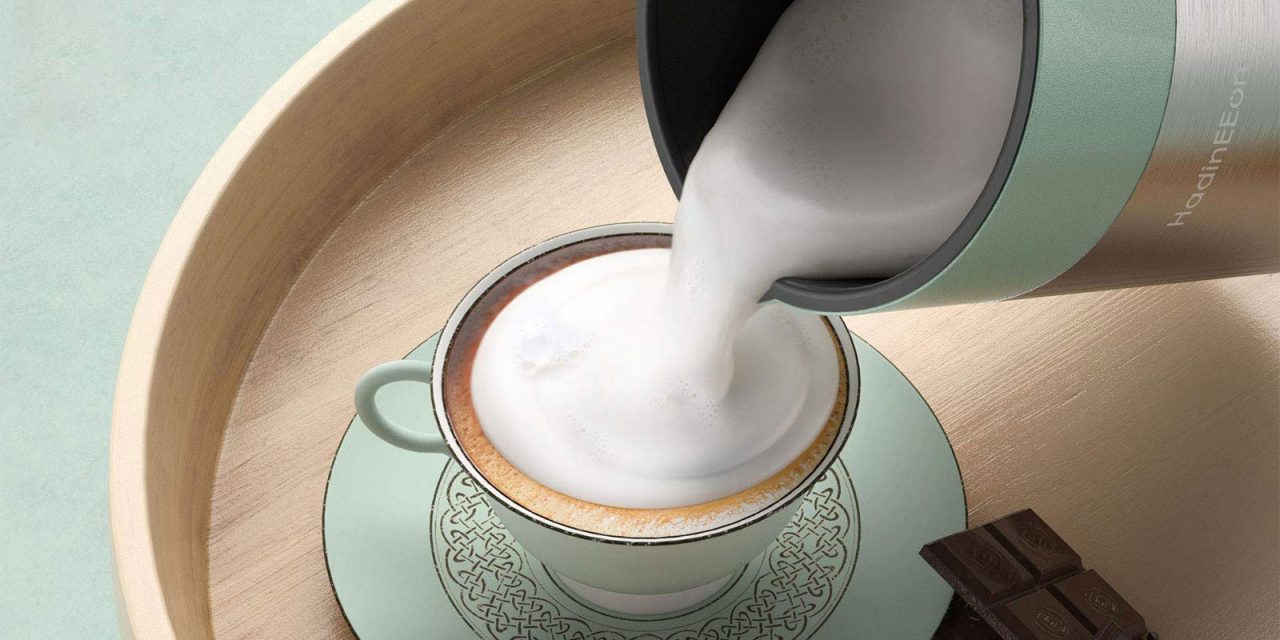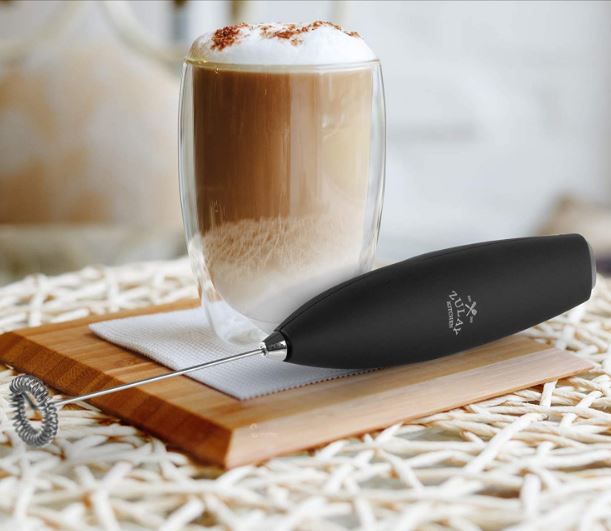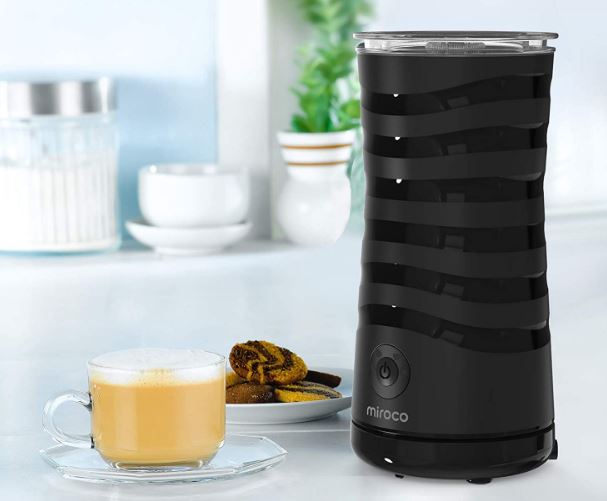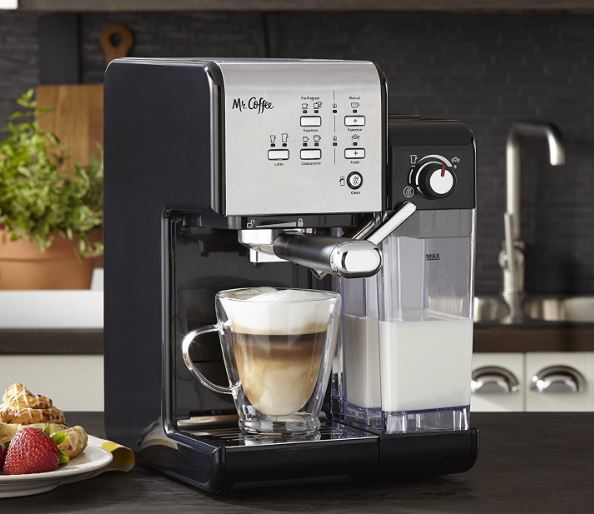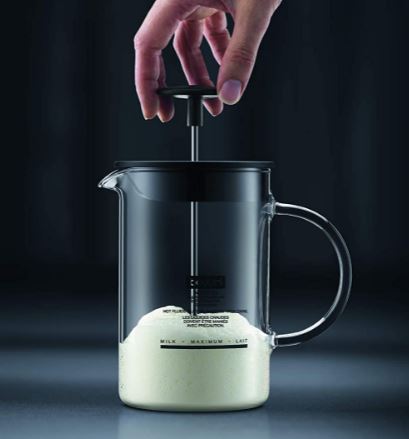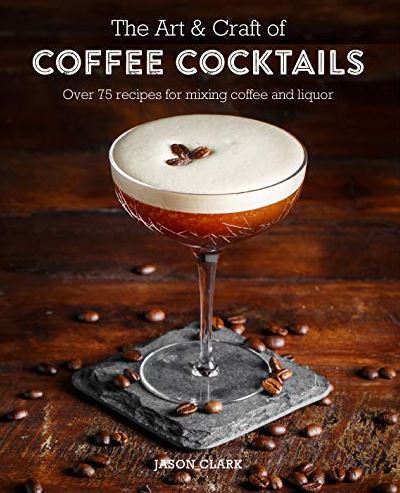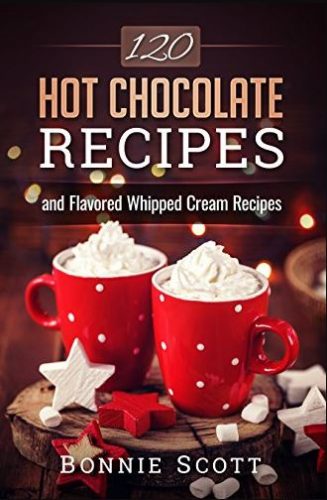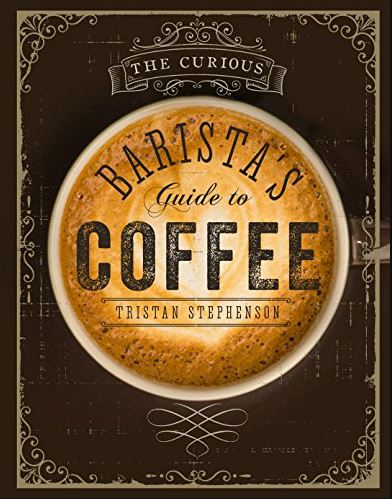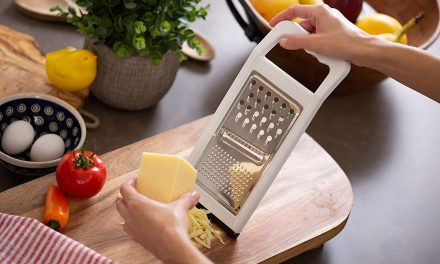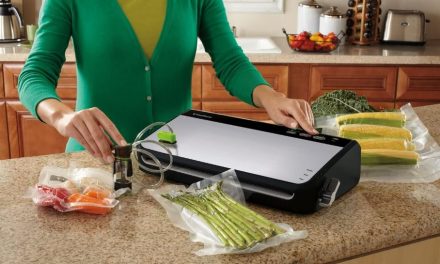If you’ve ever wondered how cafes get that perfect, foamy head on their lattes, cappuccinos, and hot chocolates, the secret is in the milk frothing. Without it, some coffees just aren’t the same. So if you’re a lover of hot drinks, a milk frother is a good and affordable way to achieve cafe-quality drinks at home.
What does a milk frother do?
Milk frothers work by agitating milk, which integrates air into the liquid and makes bubbles. The bubbles collect until foam rises to the top. This might sound like whipping, but it’s not quite the same. Instead of fat content, milk frothing is based on protein content. The higher the protein content of the milk, the more stable the foam, meaning it’s less likely to break down and sink into your drink.
Stability and flavor depend on temperature. Good milk frothers get the milky foam up to 150°F (66°C), and some can get up to 170°(76°C). But beware that higher temperatures don’t mean better. For ideal sweetness and texture, you want your milk to reach a temperature between 135°F and 150°F (57-66°C). Past that point, you begin to cook the milk and lose sweetness. Your foam will become less dense. And anything above 170°F will scald your milk, leaving behind an unpleasant flavor.
In this article we’ll talk about the different types of milk frother, what you can do with them, and how to get the most out of whichever one you choose for your coffees and lattes.
Types of milk frothers
Milk frothers can be divided into four types: handheld frothers, electric frothers, multipurpose espresso machines that can froth milk, and manual frothers. Most of these tools can achieve similar results, but the amount of work and cleanup required varies.
Regardless of type of milk frother, know that size can be deceiving with these devices because of how foam expands. For example, a 10-ounce electric milk frother can only hold one cup of milk, meaning it—and most milk frothers devices—are sized to produce enough foam for one to two cups of your preferred beverage at a time. This is something to consider if you’re wanting to make large batches of foam for multiple drinks.
Handheld milk frothers (frother whisks)
Very similar to immersion blenders in size, shape, and functionality, handheld milk frothers can be good solutions for anyone who plans only to froth milk for one to two drinks at a time. They don’t take up much space and are a good option if you’re running short on power outlets, as they run on batteries.
Don’t be surprised if results are a little inconsistent with these frothers, however. Without a heating element of their own—you have to preheat the milk yourself—there is an extra variable here that may affect quality. For many, though, this is still a great option, and at such low prices, it doesn’t hurt to try one.
Pros:
- Easy to clean
- Perfect for individuals
- Doesn’t take up much kitchen space
- Runs on batteries
Cons:
- They work best on preheated milk, so there’s an extra step
- Not for large batches/families
Price range: $8-$25
Electric milk steamers and frothers
Electric milk steamers and frothers are kettle-like kitchen tools that can heat and/or froth milk on the fly. While not as compact as a handheld frother, these frothers still don’t take up much space, and they’re easy to clean. Most froth milk for no more than one to two drinks at a time, though a few, like Breville’s Milk Cafe, can froth up to three cups of milk at once.
These are very precise and versatile frothers. They heat up to 150°F/66°C or hotter in only a couple of minutes. Many come with specialized internal accessories (whisks or discs) that can vary foam consistency to accommodate different kinds of drinks. Most will also froth cold milk for iced drinks.
Pros:
- Precise, will deliver ideal results every time
- Easy to clean; some are even dishwasher-safe
Cons:
- Some devices only steam milk, which may not give you the foam consistency you’re looking for
- Typically not for large batches/families
Price range: $35-50, though larger capacity frothers can cost well over $100
Is a milk frother the same as a milk steamer?
No, milk steamers are not milk frothers. When buying an electric frother, make sure to note whether the product is purely a steamer or a steamer and frother.
While both a steamer and a frother will create milk foam, there are differences in texture consistency. A steamer will produce light, airy foam, while a frother will produce dense, thick foam. Either consistency works well for hot drinks, but if you have a preference, this is something to watch for.
Espresso machines that froth milk
Some espresso machines come with built-in milk frothers. They often appear on the side of the machine with a separate compartment which you fill with milk. They work exactly the same as the electric frothers mentioned above. The only difference is that these machines also double as full-blown espresso and latte makers. Because these are multipurpose machines, expect to pay more.
Pros:
- Very convenient; do everything with one machine
- Precise, will deliver ideal results every time
- Best for large drink batches
Cons:
- Requires more kitchen space
- More expensive
Price range: $50-$800+, with commercial models being much more expensive
Manual milk frothers
Manual frothers function—and can even look—a lot like French presses. The milk is frothed by repeatedly pumping a plunger into a closed container or pitcher until it becomes foamy. From there, it’s as simple as pouring or spooning the froth onto your drink.
These frothers may be best suited for individuals who prefer iced coffees or lattes, as they come with no internal heating mechanism. Luckily, the container itself can usually be heated on the stovetop or in the microwave if you do want hot froth, but, as with handheld frothers, this means they aren’t a precise frothing method. Expect some variations in consistency.
If you’re not that worried about precision and don’t want to pay much for a frother, manual milk frothers can be a decent enough tool for your kitchen. But, hey, if you have a Mason jar, you might not even need a manual frother. For this and other reasons, we recommend you stick with the electric and battery-powered frothers mentioned above.
Pros:
- Doesn’t take up much kitchen space
- Without any electronics, these tools can last a long time
Cons:
- No internal heating mechanism
- Requires manual labor (but it’s not hard)
- Can be difficult to clean
- Not for large batches/families
Price range: $10-$50
The best milk frother brands
As with anything coffee-related, there are many brands out there from which to choose. Milk frothers aren’t the most complicated machinery to manufacture, but some brands stand out from the pack for their consistent performance quality.
- Bodum is a Danish-Swiss brand that focuses entirely on tea and coffee making and their sundry accessories, including milk frothers. Bodum products are known for their elegant designs as much as their functionality, making them ideal statement pieces for countertops.
- Breville is a household name in kitchen appliances for a reason. They make a lot of different products, but they’re perhaps best known for their coffee machines, which range from simple drip-style to expensive, commercial-quality espresso machines. Perhaps it’s no surprise they also make milk frothers. Notably, Breville often works with Nespresso to make
- HadinEEon is a Chinese home appliances brand that’s regularly lauded by users for their well-made products. In particular, this brand dominates in the electric frother and steamer category, though it also manufactures some handheld whisks.
- Nestle creates coffee products under their Nespresso brand. While Nespresso is best known for its single-serve espresso machines, a few of which have frothing capabilities, they’re also in the business of making dedicated electric frothers/steamers under the Nespresso Aeroccino brand. If you’re looking for both an espresso machine and milk frother, and want to keep the two separate, consider Nespresso, as they often bundle these devices (in partnership with Breville).
- Zulay is a newer kid on the block when it comes to small kitchen appliances. In the milk frothing category, they’re best known for their highly affordable motorized handheld frother whisks, which are some of the best-selling and most highly rated on Amazon.
Not all milks froth the same
The milk frother you choose is only part of the story. What milk you use in frothers will also partly determine the texture and density of the foam, as well as how it blends into the drink.
While some manufacturers will advise you to use milk with higher milkfat content, this has to do with taste (fat increases flavor richness), not foam texture or consistency, which is determined by protein content. All cow’s milk, regardless of fat content, will produce similarly foamy results for this reason, but the taste will be different based on the fat.
What about plant-based milks? You actually can foam these milks, but again, it’s all about the protein. If your plant-based milk substitute has high protein content, it’ll likely foam well. If it has little to no protein, expect more liquidy results, but the addition of the nutty flavor may override your qualms with the texture. You may also find there are some variations between brands, as how they process their ingredients can affect protein content.
| Liquid | Protein (Per Cup) | Froth Quality |
| Cow’s Milk (1%, 2%, or Whole) | 8 g | Good |
| Soy Milk | 6 g | Good |
| Cashew Milk | 5 g | Okay |
| Oat Milk | 3 g | Okay |
| Almond Milk | 1 g | Poor |
| Rice Milk | <1 g | Poor |
| Coconut Milk | <1 g | Poor |
Get the most out of your milk frother
If you’re worried a milk frother could easily become a kitchen tool you use once or twice, only to store and forget about, consider purchasing a recipe book that specializes in hot drinks.
- The Art & Craft of Coffee Cocktails by Jason Clark
- 120 Hot Chocolate Recipes by Bonnie Scott
- The Curious Barista’s Guide to Coffee by Tristan Stephenson
Is a milk frother worth it?
If you want cafe-style lattes and hot chocolates at home, the only way to achieve that is if you have a milk frother. And if you’re a stickler for texture consistency, you’ll probably want the precision of an electric milk frother or an espresso machine.
Here’s what we recommend:
- Get an electric steamer/foamer, like the Nespresso Aeroccino4, which will foam hot or cold milk. They’re compact, a breeze to use, give precise results, and they’re easy to clean. If you need a frother that has a larger capacity, consider Breville’s Milk Cafe.

